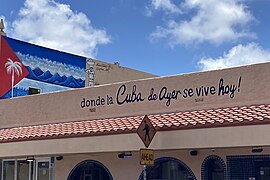
Fulgencio Batista y Zaldívar was a Cuban military officer and politician who was the elected president of Cuba from 1940 to 1944 and military dictator of the country from 1952 until his overthrow in the Cuban Revolution in 1959.

The Cuban Revolution was the military and political overthrow of Fulgencio Batista's dictatorship, which had reigned as the government of Cuba between 1952 and 1959. The revolution began after the 1952 Cuban coup d'état, which saw Batista topple the nascent Cuban democracy and consolidate power. Among those opposing the coup was Fidel Castro, then a novice attorney who attempted to contest the coup through Cuba's judiciary. Once these efforts proved fruitless, Fidel Castro and his brother Raúl led an armed attack on the Cuban military's Moncada Barracks on 26 July 1953.
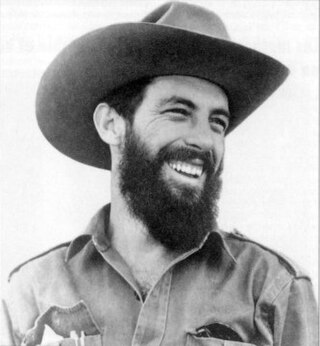
Camilo Cienfuegos Gorriarán was a Cuban revolutionary. One of the major figures of the Cuban Revolution, he was considered second only to Fidel Castro among the revolutionary leadership.
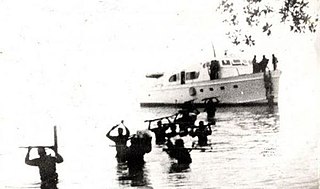
Granma is a yacht that was used to transport 82 fighters of the Cuban Revolution from Mexico to Cuba in November 1956 to overthrow the regime of Fulgencio Batista. The 60-foot diesel-powered vessel was built in 1943 by Wheeler Shipbuilding of Brooklyn, New York, as a light armored target practice boat, US Navy C-1994, and modified postwar to accommodate 12 people. "Granma", in English, is an affectionate term for a grandmother; the yacht is said to have been named for the previous owner's grandmother.

The 26th of July Movement was a Cuban vanguard revolutionary organization and later a political party led by Fidel Castro. The movement's name commemorates the failed 1953 attack on the Moncada Barracks in Santiago de Cuba, part of an attempt to overthrow the dictator Fulgencio Batista.

Osvaldo Dorticós Torrado was a Cuban politician who served as the president of Cuba from 1959 to 1976. He was a close ally of Cuban revolutionary and longtime leader Fidel Castro.

Huber Matos Benítez was a Cuban military leader, political dissident, activist, and writer. He opposed the dictatorship of Fulgencio Batista from its inception in 1952 and fought alongside Fidel Castro, Raúl Castro, Che Guevara, Camilo Cienfuegos and other members of the 26th of July Movement to overthrow it. Following the success of the Cuban Revolution that brought Fidel Castro to power, he criticized the regime's shift in favor of Marxist principles and ties to the Popular Socialist Party (PSP). Convicted of treason and sedition by the revolutionary government, he spent 20 years in prison (1959–1979) before being released in 1979. He then divided his time between Miami, Florida, and Costa Rica while continuing to protest the policies of the Cuban government.
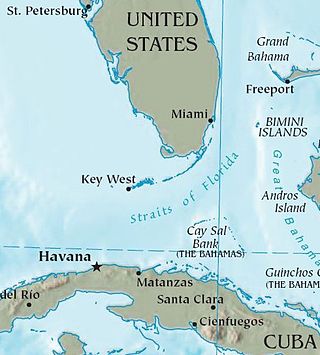
The Cuban exodus is the mass emigration of Cubans from the island of Cuba after the Cuban Revolution of 1959. Throughout the exodus, millions of Cubans from diverse social positions within Cuban society emigrated within various emigration waves, due to political repression and disillusionment with life in Cuba. Between 1959 and 2023, some 2.9 million Cubans emigrated from Cuba.

The Escambray rebellion was an armed conflict from 1959 to 1965 in the Escambray Mountains during which several insurgent groups fought against the Cuban government led by Fidel Castro. The military operation against the rebellion was called the Struggle Against Bandits by the Cuban government.
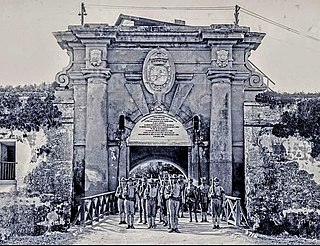
Fortaleza de San Carlos de la Cabaña, colloquially known as La Cabaña, is an 18th-century fortress complex, the third-largest in the Americas, located on the elevated eastern side of the harbor entrance in Havana, Cuba. The fort rises above the 60-meter (200 ft) hilltop, along with Morro Castle. The fort is part of the Old Havana World Heritage Site which was created in 1982.

William Alexander Morgan was an American-born Cuban guerrilla commander who fought in the Cuban Revolution, leading a band of rebels that drove the Cuban army from key positions in the central mountains as part of Second National Front of Escambray, thereby helping to pave the way for Fidel Castro's forces to secure victory. Morgan was one of about two dozen U.S. citizens to fight in the revolution and one of only three foreign nationals to hold the rank of comandante in the rebel forces. In the years after the revolution, Morgan became disenchanted with Castro's turn to communism and he became one of the leaders of the CIA-supplied Escambray rebellion. In 1961, he was arrested by the Cuban government and, after a military trial, executed by firing squad in the presence of Fidel and Raúl Castro.

Juan Almeida Bosque was a Cuban politician and one of the original commanders of the insurgent forces in the Cuban Revolution. After the rebels took power in 1959, he was a prominent figure in the Communist Party of Cuba. At the time of his death, he was a Vice-President of the Cuban Council of State and was its third ranking member. He received several decorations, and national and international awards, including the title of "Hero of the Republic of Cuba" and the Order of Máximo Gómez.
The Cuban Revolution was the overthrow of Fulgencio Batista's regime by the 26th of July Movement and the establishment of a new Cuban government led by Fidel Castro in 1959.

Ramón M. Barquín was a Cuban military colonel and opponent of former President Fulgencio Batista. Barquín was jailed by the Batista government for leading a failed coup attempt in 1956. He later fled Cuba in 1960 following the 1959 takeover by Fidel Castro.
Norberto Collado Abreu was the Cuban captain and helmsman of the yacht Granma, which brought Fidel Castro and 81 other rebels to Cuba from Tuxpan, Veracruz, Mexico, in 1956. The 1956 landing of Castro from the Granma in eastern Cuba began the Cuban Revolution which resulted in the termination of President Fulgencio Batista's government in 1959.

The Triumph of the Revolution is the historical term for the flight of Fulgencio Batista on January 1, 1959, and the capture of Havana by the 26th of July Movement on January 8.
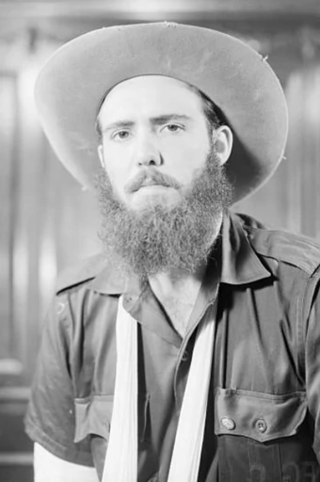
Rolando Cubela Secades was a Cuban revolutionary leader who played a vital part in the Cuban Revolution, having been a founding member of the Directorio Revolucionario Estudiantil and later the military leader of the DRE's Escambray Mountain front, achieving the rank of Commander, the highest military rank in the Revolutionary Army. After the Revolution succeeded in 1959, Cubela became Cuba's envoy to UNESCO. Under the cryptonym AM/LASH, Cubela became "an important asset" of the Central Intelligence Agency, and worked with them on plots to assassinate Fidel Castro. In 1966, Cubela was arrested for plotting the assassination of Castro, and sentenced to 25 years in prison. Released in 1979, he went into exile in Spain.
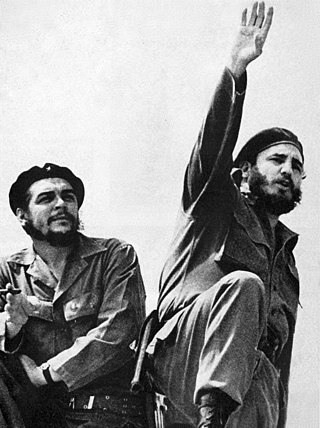
The consolidation of the Cuban Revolution is a period in Cuban history typically defined as starting in the aftermath of the revolution in 1959 and ending in 1962, after the total political consolidation of Fidel Castro as the maximum leader of Cuba. The period encompasses early domestic reforms, human rights violations, and the ousting of various political groups. This period of political consolidation climaxed with the resolution of the Cuban missile crisis in 1962, which then cooled much of the international contestation that arose alongside Castro's bolstering of power.

The emigration of Cubans, from the 1959 Cuban Revolution to October of 1962, has been dubbed the Golden exile and the first emigration wave in the greater Cuban exile. The exodus was referred to as the "Golden exile" because of the mainly upper and middle class character of the emigrants. After the success of the revolution various Cubans who had allied themselves or worked with the overthrown Batista regime fled the country. Later as the Fidel Castro government began nationalizing industries many Cuban professionals would flee the island. This period of the Cuban exile is also referred to as the Historical exile, mainly by those who emigrated during this period.
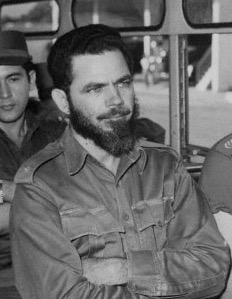
The Huber Matos affair was a political scandal in Cuba when on October 20, 1959, army commander Huber Matos resigned and accused Fidel Castro of "burying the revolution". Fifteen of Matos' officers resigned with him. Immediately after the resignation, Castro critiqued Matos and accused him of disloyalty, then sent Camilo Cienfuegos to arrest Matos and his accompanying officers. Matos and the officers were taken to Havana and imprisoned in La Cabaña. Cuban communists later claimed Matos was helping plan a counter-revolution organized by the American Central Intelligence Agency and other Castro opponents, an operation that became the Bay of Pigs Invasion.
